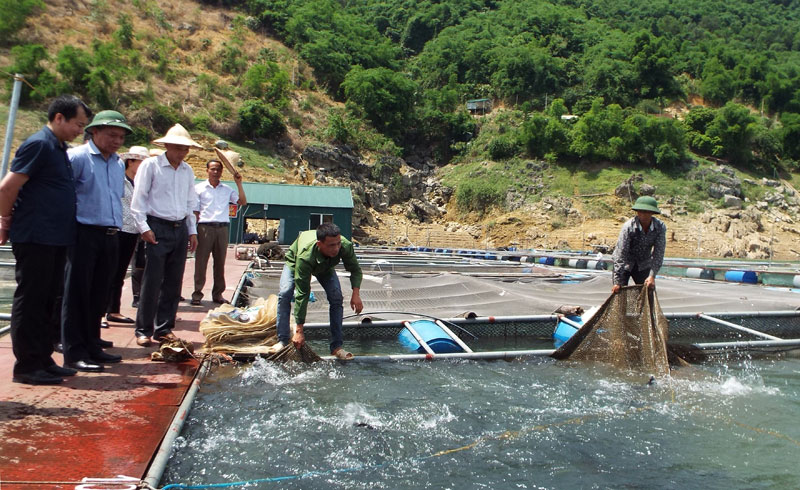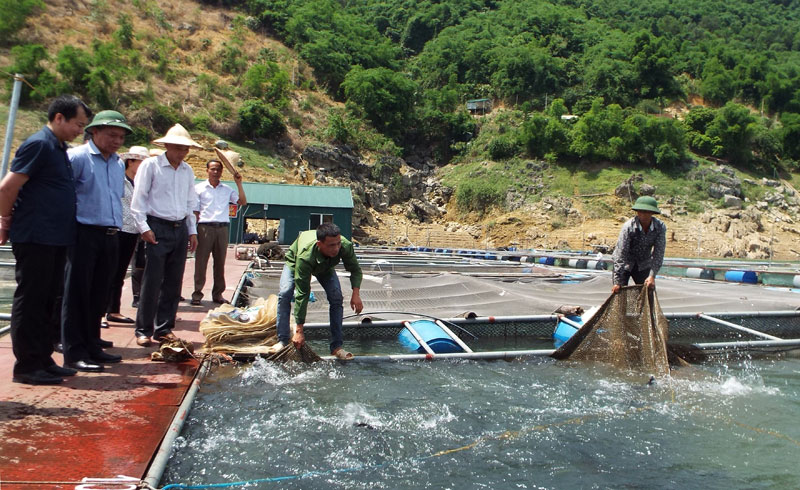



The province has over
4.000 fish farming cages, 550 higher than the target set in the resolution.
Hoa Binh reservoir has
rich aquatic resources. It covers 8,900 hectares, spanning over 19 communes in
Da Bac, Mai Chau, Tan Lac, Cao Phong districts and Hoa Binh city. The lake, measuring
2 km at the widest and 80-100 metres deep, contains 9.5 billion cubic metres of
water. It is surrounded by high mountains, with diversified vegetation, clean
lake water and fabourable condition for aquaculture development.
The provincial Party
Committee’s Resolution 12-NQ/TU, issued on June 13, 2014, aimed to developing
fish farm cages in the Hoa Binh reservoir on a concentrated and large-scale from
2014-2020, thus raising incomes for local farmers and developing the
aquaculture sector sustainably.
Da Bac has 7,000 hectares
of water surface in the reservoir. The aquaculture and fishing have helped
improved local people’s living conditions. The district also issued a
resolution on developing aquaculture and implementing measures to assist local
farmers in developing fishery sustainably. Currently, the district has 1,300
fish farming cages, mostly in Tien Phong, Vay Nua, and Dong Ruong communes.
Hien Luong commune has 900
hectares of water surface, an ideal condition for aquaculture development. The
commune has created favourabe conditions for local famers to expand fish farming
cages, thus improving their lives. It has 194 fish farming cages, generating
billions of VND per year, accounting 30 percent of the local people’s total
revenue. Head of the fishery logistic cooperative Xa Van Huy said his
cooperative has 50 fish farming cages, helping to raise incomes for its members.
After three years of
implementation, Hoa Binh province has exceeded the targets set in the resolution.
The province now has 4,050 fish farming cages, equivalent to 250,000 cubic
metres, 550 higher than the figure set in the resolution. These cages produce
7,700 tonnes of fish, much higher than the target of 2,100 tonnes of fish. They
have created stable jobs for 5,000 labourers.
Thirty five businesses,
cooperatives and households have participated in large-scale intensive fishing
farming, accounting for 55 percent of the total fish cages and 67 percent of
the total output. The province has also lured an increasing amount of investment
in the sector. Each hectare of fish farming generates 125 million VND per year.
Many establishments have implemented the resolution in an effectively, such as
Bai Sang Cooperative in Mai Chau district, a group of households in Ngoi Hoa
commune in Tan Lac district.